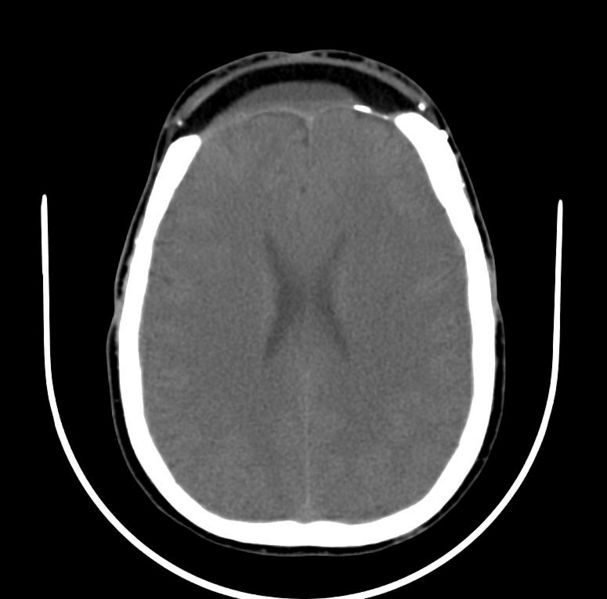Cranioplasty
|
WikiDoc Resources for Cranioplasty |
|
Articles |
|---|
|
Most recent articles on Cranioplasty Most cited articles on Cranioplasty |
|
Media |
|
Powerpoint slides on Cranioplasty |
|
Evidence Based Medicine |
|
Clinical Trials |
|
Ongoing Trials on Cranioplasty at Clinical Trials.gov Clinical Trials on Cranioplasty at Google
|
|
Guidelines / Policies / Govt |
|
US National Guidelines Clearinghouse on Cranioplasty
|
|
Books |
|
News |
|
Commentary |
|
Definitions |
|
Patient Resources / Community |
|
Patient resources on Cranioplasty Discussion groups on Cranioplasty Patient Handouts on Cranioplasty Directions to Hospitals Treating Cranioplasty Risk calculators and risk factors for Cranioplasty
|
|
Healthcare Provider Resources |
|
Causes & Risk Factors for Cranioplasty |
|
Continuing Medical Education (CME) |
|
International |
|
|
|
Business |
|
Experimental / Informatics |
Editor-In-Chief: C. Michael Gibson, M.S., M.D. [1]
Overview
This article needs additional citations for verification. (August 2007) (Learn how and when to remove this template message) |
Cranioplasty is a surgical repair of a defect or deformity of a skull. Cranioplasty is almost as ancient as trephination, yet its fascinating history has been neglected. There is strong evidence that Incan surgeons were performing cranioplasty using precious metals and gourds. Interestingly, early surgical authors, such as Hippocrates and Galen, do not discuss cranioplasty and it was not until the 16th century that cranioplasty in the form of a gold plate was mentioned by Fallopius. The first bone graft was recorded by Job Janszoon van Meekeren, who in 1668 noted that canine bone was used to repair a cranial defect in a Russian man. The next advance in cranioplasty was the experimental groundwork in bone grafting, performed in the late 19th century. The use of autografts for cranioplasty became popular in the early 20th century. The destructive nature of 20th century warfare provided an impetus to search for alternative metals and plastics to cover large cranial defects. The metallic bone substitutes have largely been replaced by modern plastics. Methyl methacrylate was introduced in 1940 and is currently the most common material used. Research in cranioplasty is now directed at improving the ability of the host to regenerate bone. As modern day trephiners, neurosurgeons should be cognizant of how the technique of repairing a hole in the head has evolved.
3-D techniques are often used to work out plate sizes, and research into the subject is ongoing.
CT images of a patient s/p bifrontal cranioplasty
See also
Cranium
Craniotomy
Oral and Maxillofacial surgery


